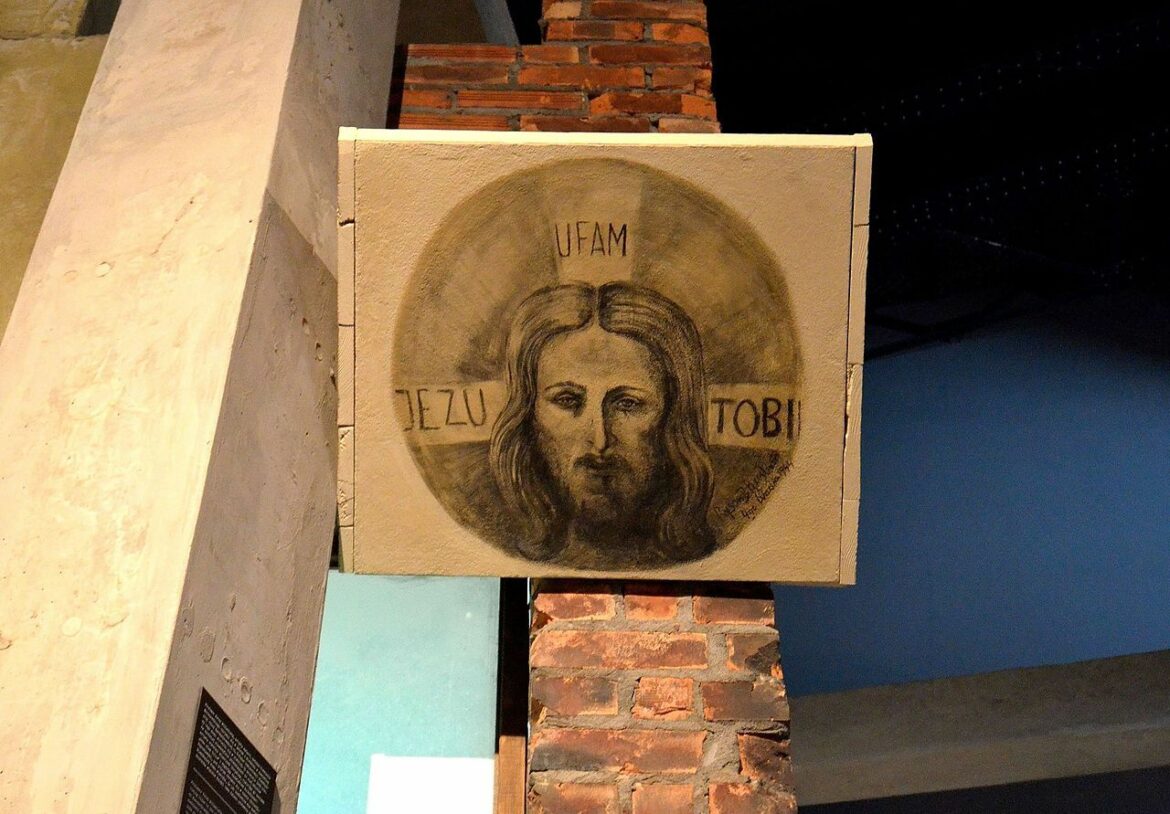During the German bombardment of Warsaw in 1944, Peretz Willenberg, a Jew, painted a picture of Jesus Christ on the stairs leading to the basement in an apartment building at 60 Marszałkowska Street. The building was one of the few to survive the air raid. The civilians sheltering there also survived.
Peretz Willenberg, an extremely talented artist, founded the School of Drawing and Painting in Poland before the Second World War, which he successfully ran. He gave drawing lessons in various places and created sacred paintings. His works could be found, among others, in the synagogue in the Polish town, Opatów. He also did the restoration of the Old Synagogue in Częstochowa. Both buildings were destroyed during the Second World War unleashed by the Germans. Those who want to get acquainted with Peretz’s works must visit the town of Piotrków, where his frescoes are preserved in the Small Synagogue.
When the Second World War broke out, Willenberg left for Warsaw. His wife, Maniefa, together with their son Samuel and daughters Ita and Tamara, went to Częstochowa, staying on the Aryan side. However, someone denounced the girls to the Germans who sent them to the extermination camp at Treblinka and murdered them there. Samuel, who took part in the revolt and escaped from the camp, was soon transported there as well. Samuel then fought in the Warsaw Uprising. He survived the war and created sculptures depicting the fate of prisoners in the German extermination camp at Treblinka.
At the time, Peretz was living in Warsaw. In order not to be recognised, he pretended to be mute and hid under the name Pękosławski. He painted pictures and made drawings, which he later sold. On one of his paintings representing the image of Jesus Christ, he placed the face of his son Samuel.
During the anti-German Warsaw Uprising, he took refuge in a building at 60 Marszałkowska Street. On 11 September 1944, when Germans bombed Warsaw, he painted an image of Christ on the wall under the stairs leading to the basement with the inscription “Jesus I trust in you”. The building survived the devastation of the war. The civilians sheltered there also survived the bombing and believed that it was because of the painting.
The painting on the staircase was secured after the war. However, it is not open to the public. Its copy can be seen in the Warsaw Uprising Museum.
Read also: A Jew who fought in the Warsaw Uprising and rebelled against the Germans in a death camp. He miraculously avoided death [https://dignitynews.eu/pl/zyd-ktory-walczyl-w-powstaniu-warszawskim-i-zbuntowal-sie-przeciwko-niemcom-w-obozie-zaglady-cudem-uniknal-smierci/].





